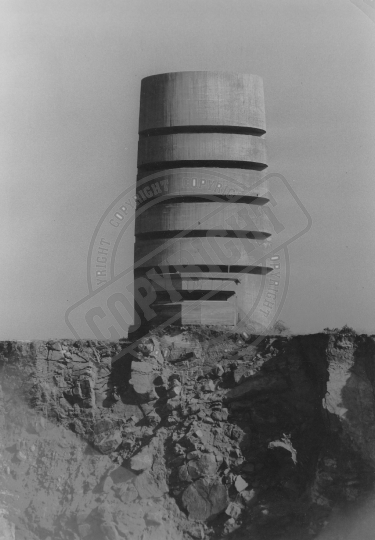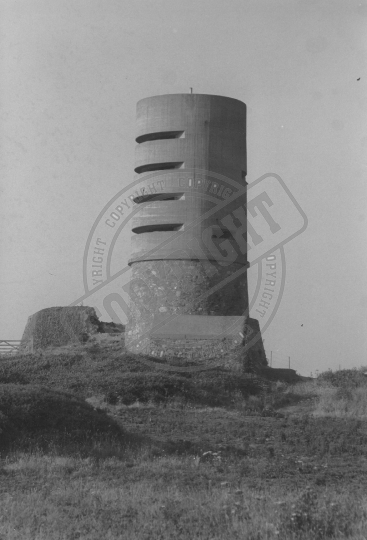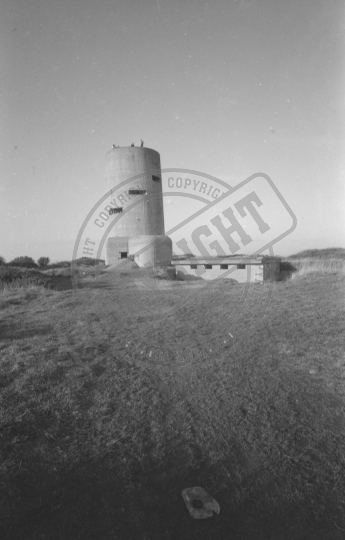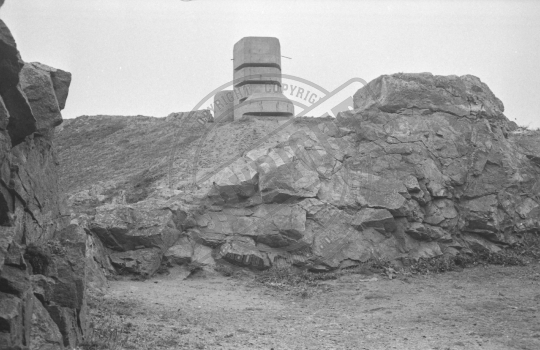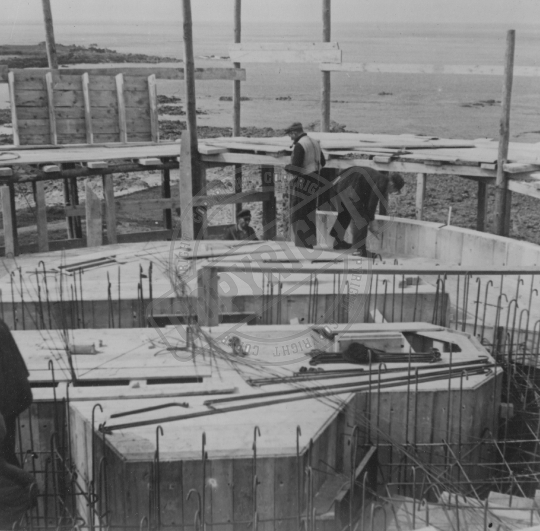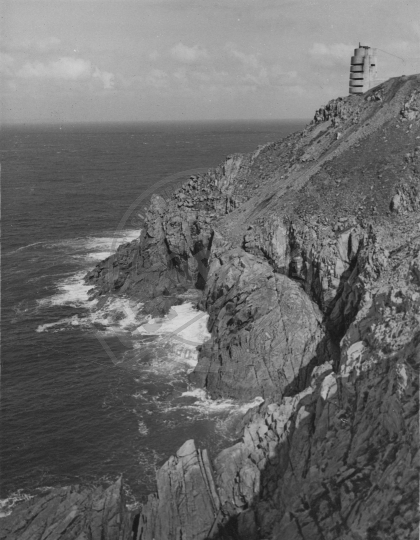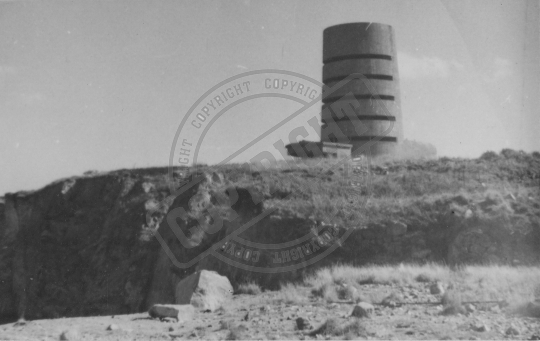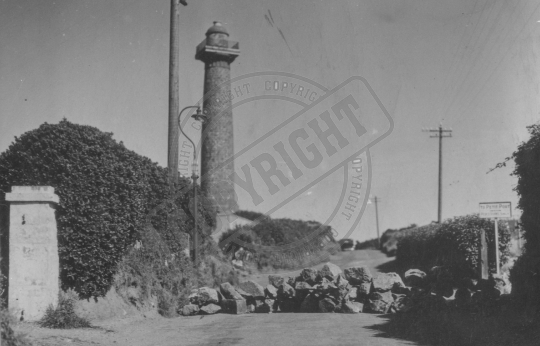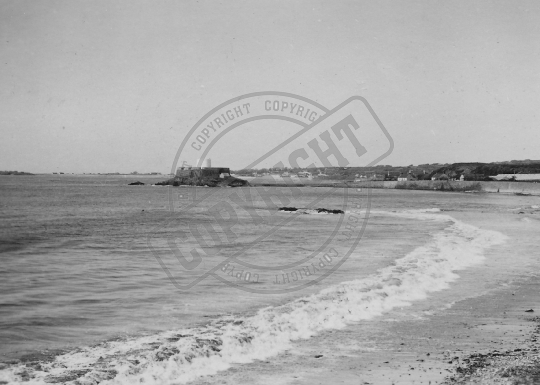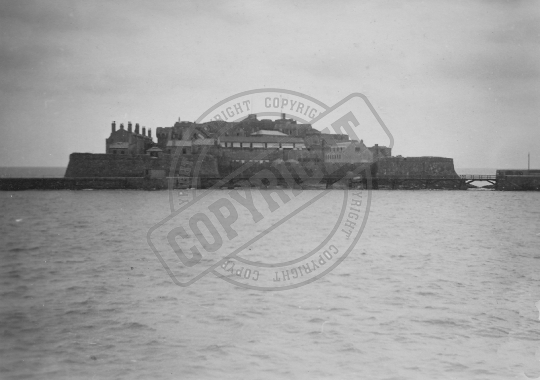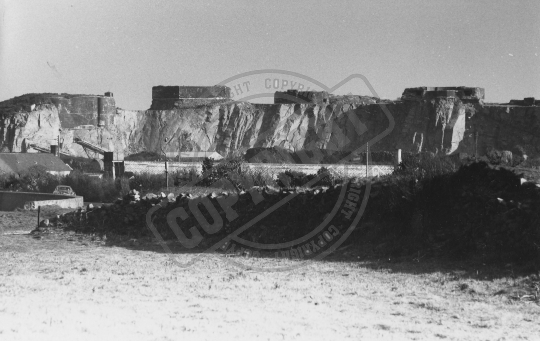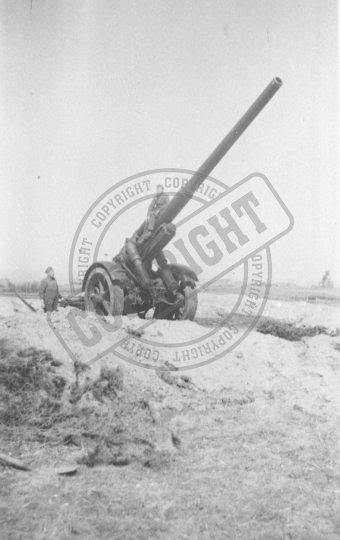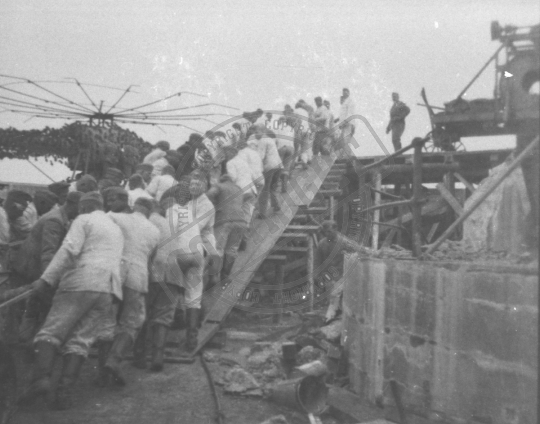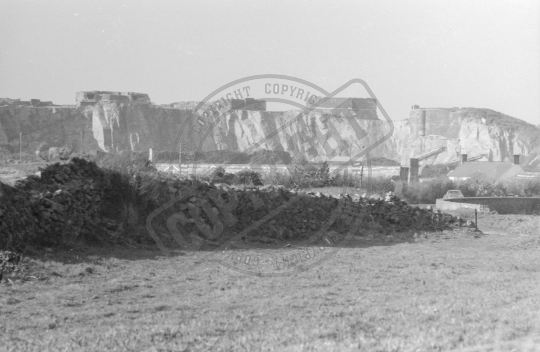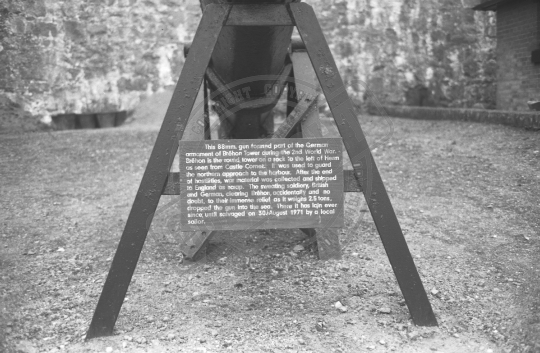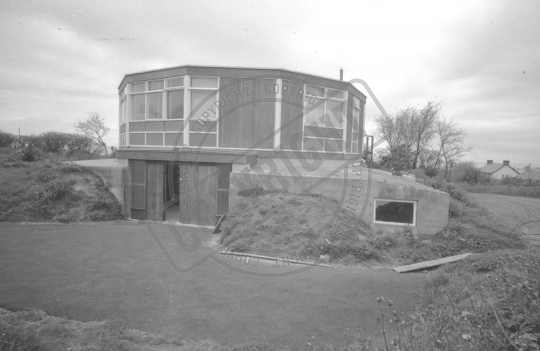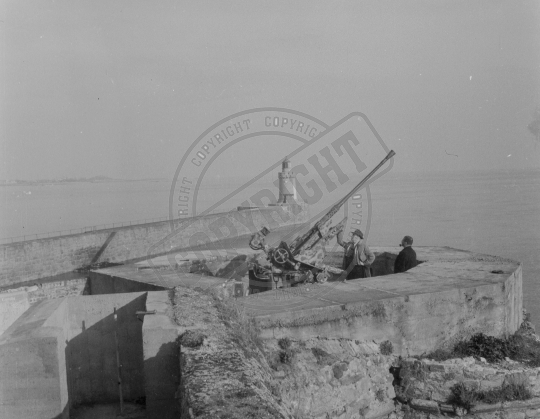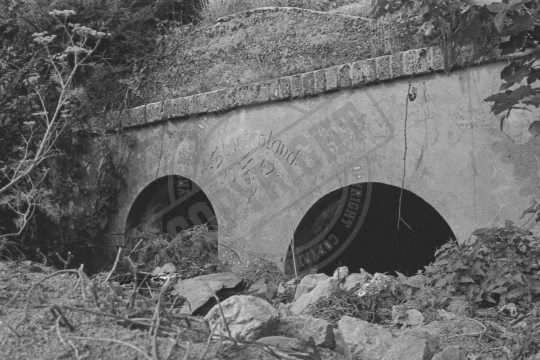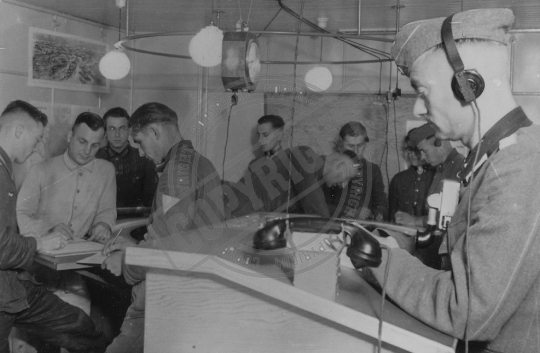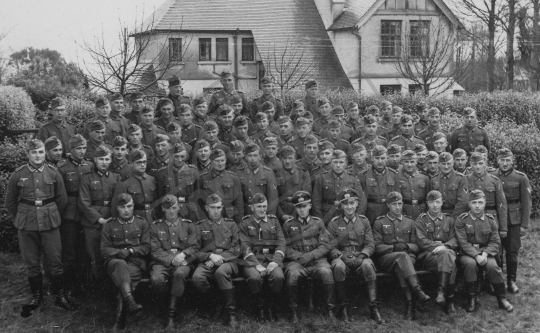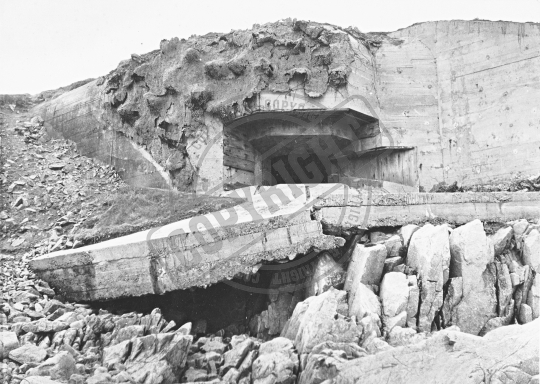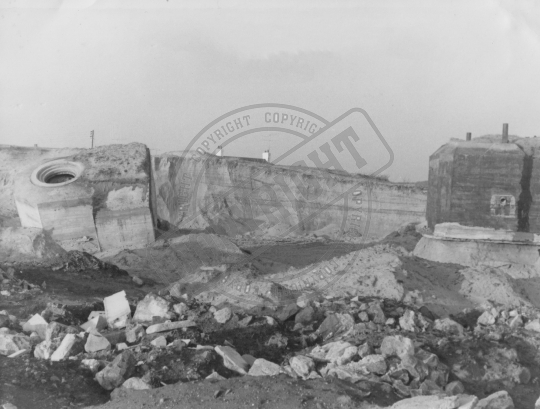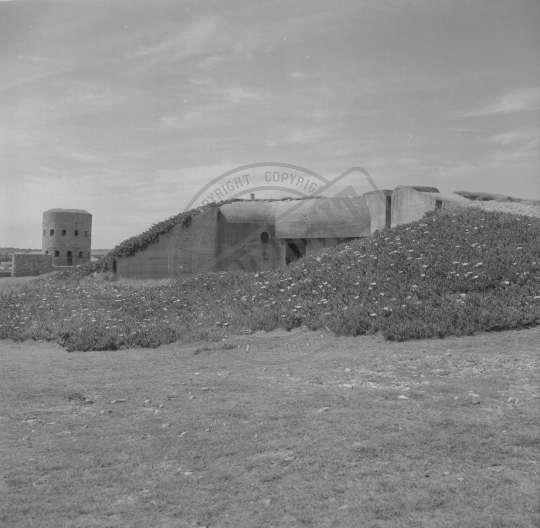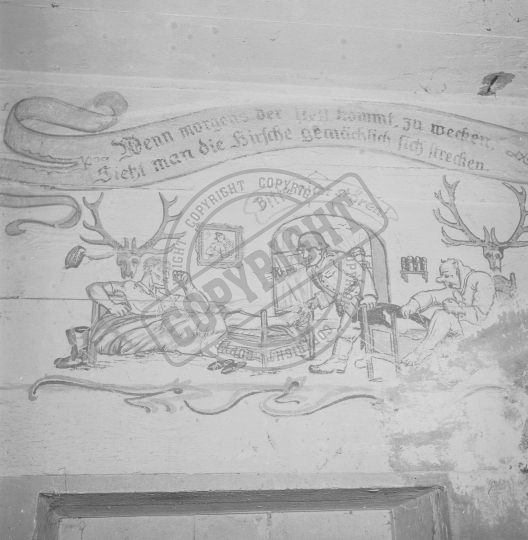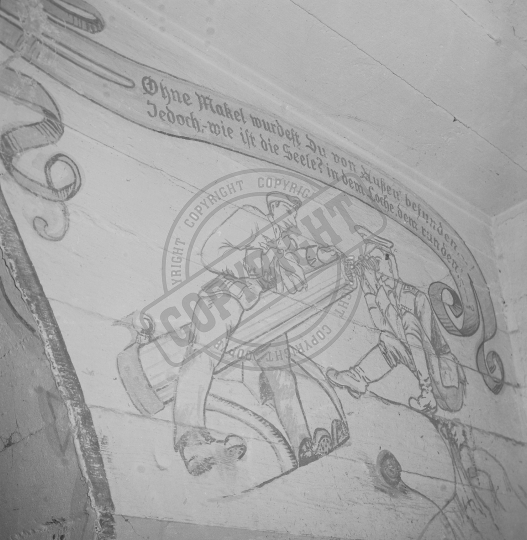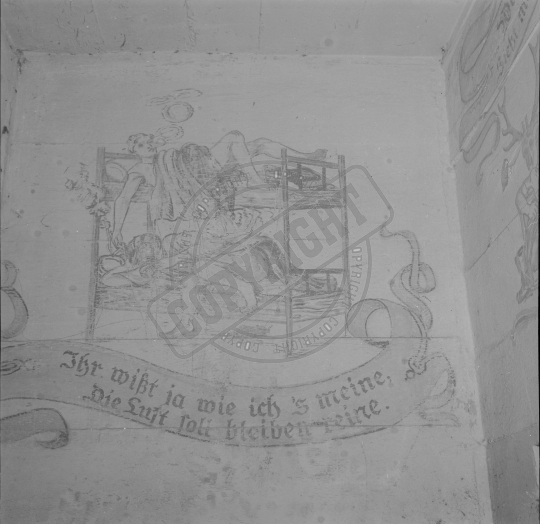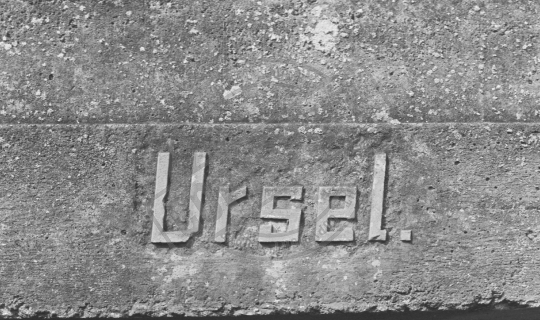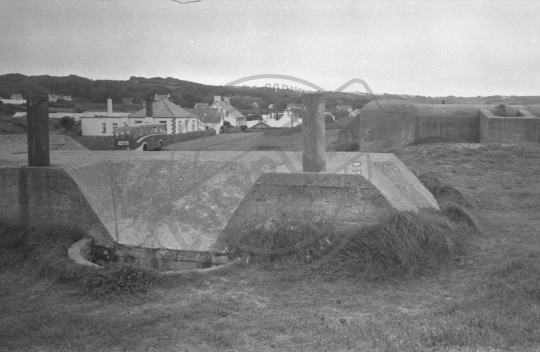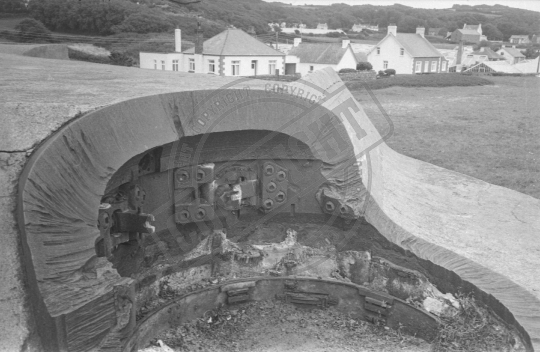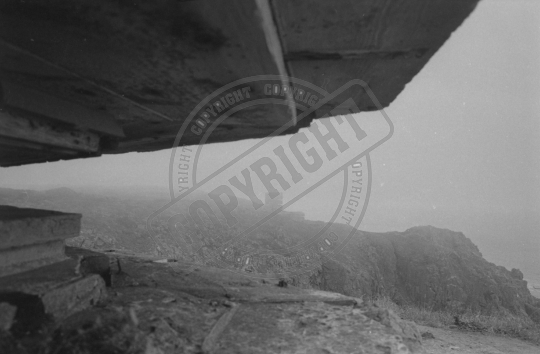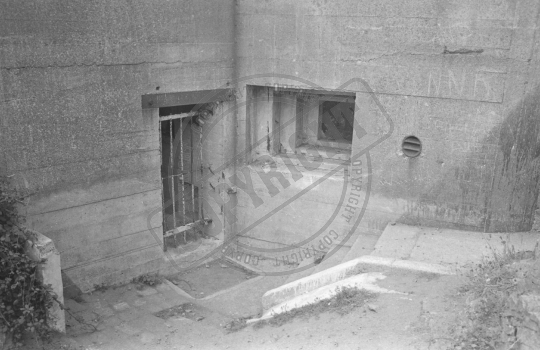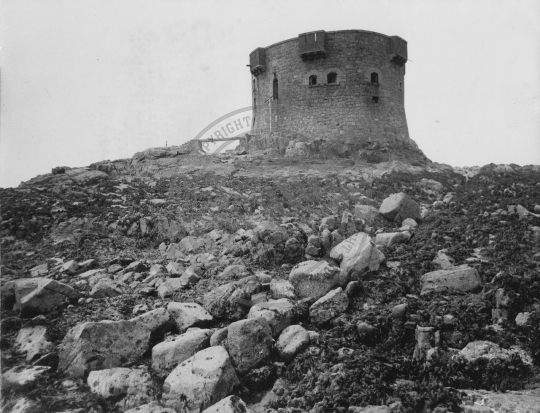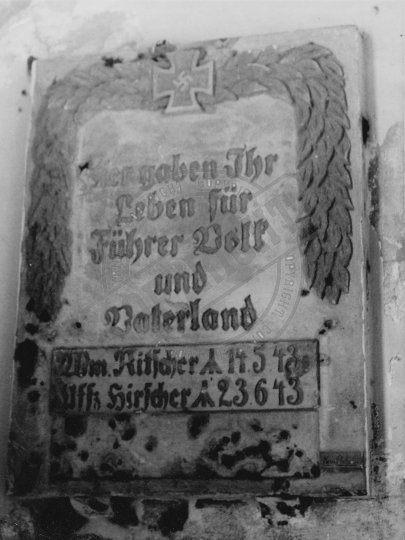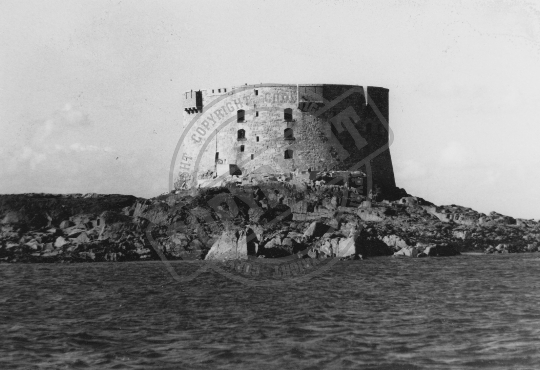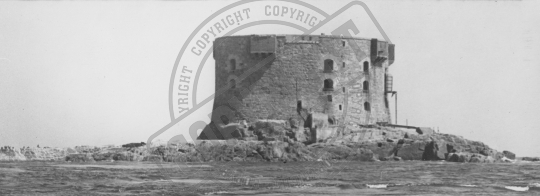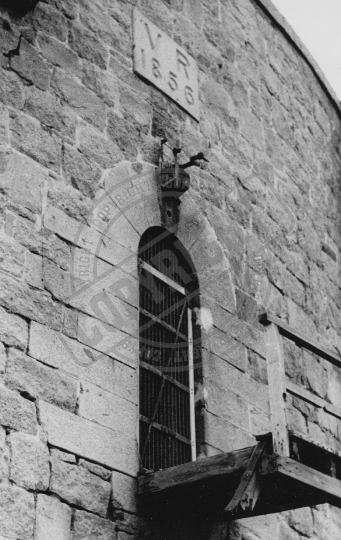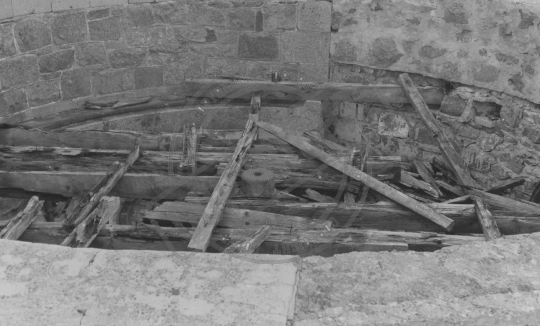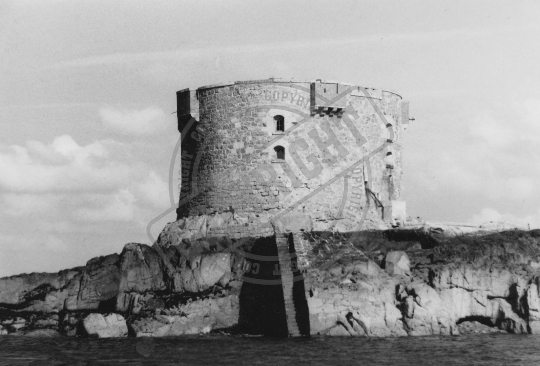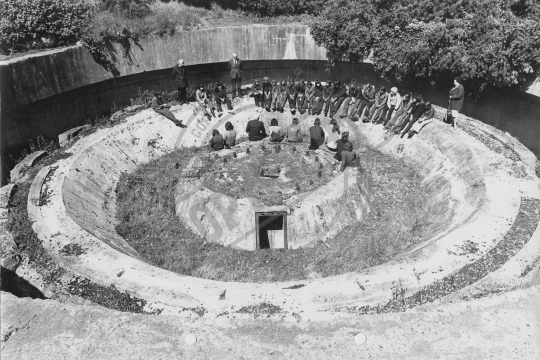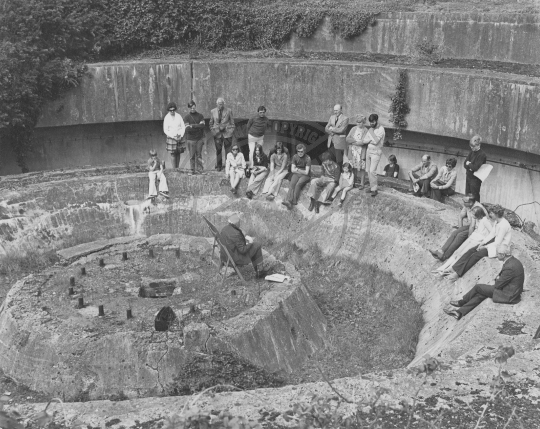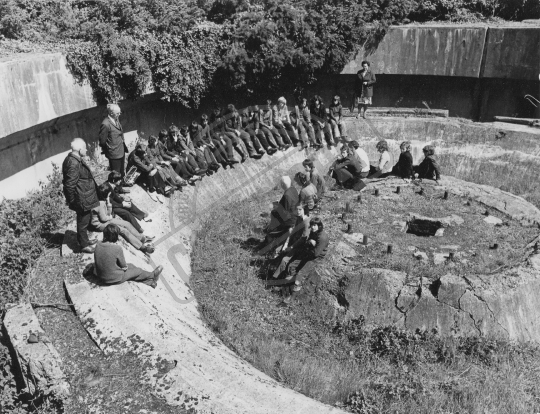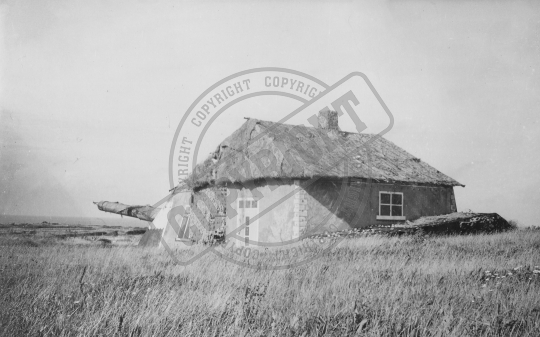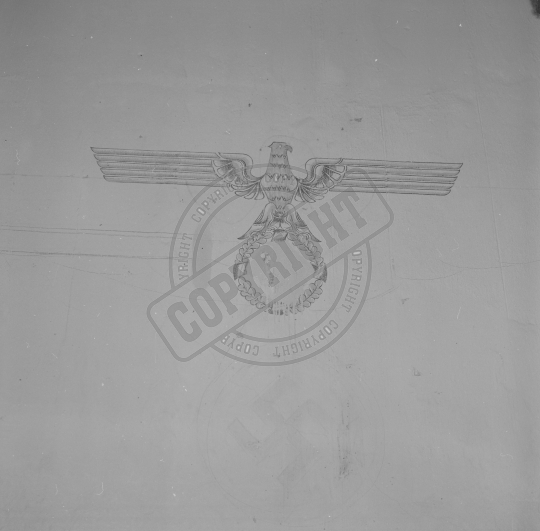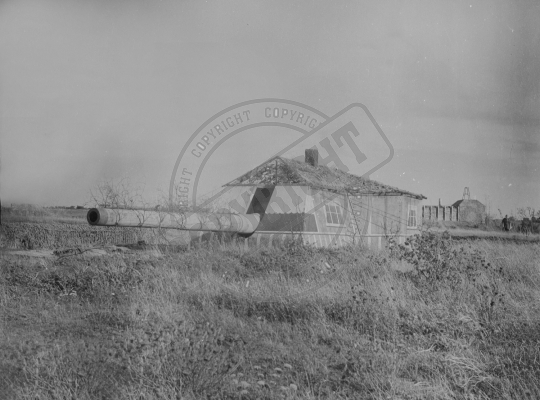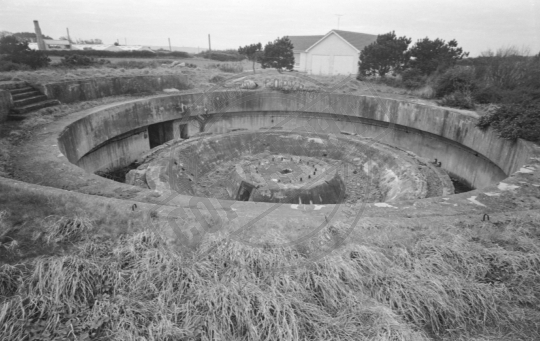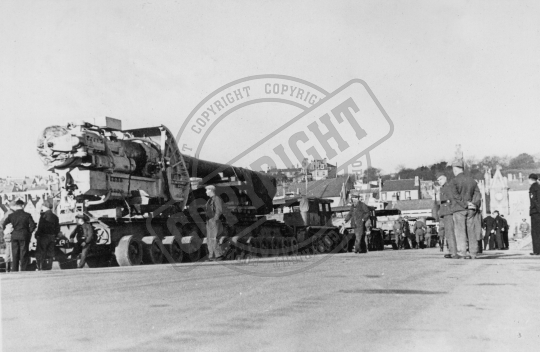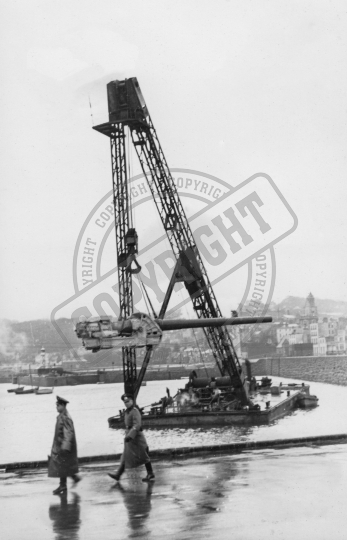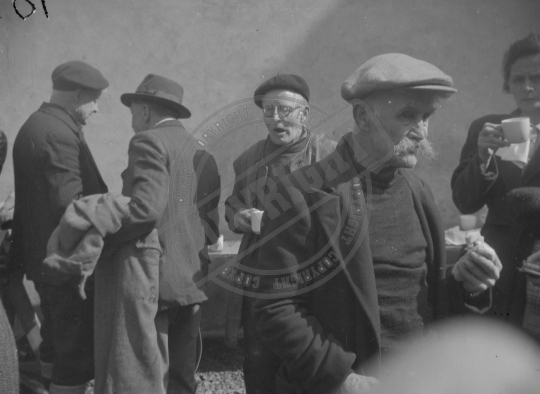Results (332)
TPL_00142
Post war photograph of naval direction finding tower MP1 at Chouet which fell into the quarry in 1991.
TPL_00140
Post war photograph of naval direction finding tower MP1 at Chouet which fell into the quarry in 1991.
OA_066
Marinepeilständen und Messtellen (Naval Coastal Artillery Direction and Range-finding Positions). Post–war view of MP 3 at Les Landes, St Ouen, Jersey, covered the sea passage between Jersey and Guernsey. This tower had Gema Seetakt radar apparatus installed that was officially named Funkmessortungsgerät West (Radio Signalling Apparatus or FuMo West).
OA_013
The German naval Tower at Chouet, Vale, designated MP 1 (Marine Peilständ und Messtellung 1). The tower fell into Mont Chouet Quarry on 22nd March, 1991. The German Army Artillery range-finding position M2 (Mebstelle 2), at the front of the tower, had fallen some years earlier in 1982.
TPL_00083
Doyle Monument, Jerbourg. The road approaching is blocked by boulders placed by Commandos during Operation Ambassador in July 1940.
SP_0016
Photographed from the vicinity of the Imperial hotel on 8th June 1941, this view of Rocquaine Bay shows its most obvious feature, Fort Grey. Known to locals as the 'Cup and Saucer’ an interesting feature is the Martello Tower painted white as this was subsequently camouflaged by the Germans. This Photograph is from a small collection of six taken by an unknown German soldier posted to Guernsey in 1941 with 319 Infantry Division.
SP_0015
Castle Cornet viewed from the White Rock on 9th April 1941. No German defence works are built yet, though of interest are the antennas surmounting Castle Cornet, the chimneys seen left removed post war and other structures also removed. This Photograph is from a small collection of six taken by an unknown German soldier posted to Guernsey in 1941 with 319 Infantry Division.
TPL_00134
Post war photograph showing several structures of Batterie Steinbruch prior to their removal during the quarry expansion at Les Vardes, St Sampson.
TPL_00131
German naval personnel man-handling a 17cm artillery piece into position at Fort Albert, Alderney.
TPL_00130
Post war photograph showing several structures of Batterie Steinbruch prior to their removal during the quarry expansion at Les Vardes, St Sampson.
TPL_00129
Barrel recovered from Brehon Tower, note that the sign suggests that it is a 88mm gun but is in fact a 10.5cm K331(f) gun.
TPL_00125
Sudetenland 1942 is inscribed in the concrete at Batterie Scharnhorst which was home to four 15cm K18 artillery pieces capable of firing a shell 24.8Km. The guns were transferred to Jersey in 1944.
SP_0027
Inside the command post of Batterie Elefant, Bailiffs Cross Road, St Andrew, Guernsey where plotting information is collated then communicated to the gun positions for aiming and firing. This was situated in close proximity to the 'Paper House’ and the observation tower.
SP_0022
Group photograph showing members of artillery Batterie Elefant which was situated at Bailiffs Cross Road, St Andrew, Guernsey. The photo was taken in the grounds of what is now Les Bourgs Hospice and the building in the background is known as Les Marronniers.
TPL_00124
The remains of the original camouflage were still visible here on a post war photograph of the 10.5cm K331(f) bunker at Fort Hommet.
TPL_00123
Post war photograph of a mortar position and a personnel bunker which were eventually buried in the sand dunes at L`Eree located between the two car parks. Messrs J&D Norman Ltd had a concession from the States of Guernsey for the removal of sand in the area.
TPL_00115
German fortification with the name Ursel above the entrance of a bunker located at Castle Cornet.
TPL_00114
Post war photograph of a reinforced field order (RFO) personnel bunker which forms part of the defences at Rocquaine, St Peters.
TPL_00113
This steel turret was cut up as part of the post war scrap drive, one of the only examples still visible in Guernsey. The structure housed a number of machine guns in the turret as part of the fortification at Rocquaine, St Peters.
TPL_00112
Post war photograph looking through the observation slit of the command post of Batterie Dollmann, Pleinmont. In the background MP4 a naval direction finding tower can be seen.
TPL_00093
Ornate cast concrete plaque commemorating the death of Uffz. Hirscher who drowned and another soldier Ritscher, cause of death unknown but possibly from aircraft attack. The plaque was removed from Brehon Tower and is now on display at the German Occupation Museum.
TPL_00087
Post war photograph of Brehon Tower which housed two 2cm Flakvierling anti-aircraft guns on the roof, each weapon comprised of four barrels per gun. The tower also housed a 10.5cm K331(f) gun facing north.
TPL_00086
Post war photograph of Brehon Tower which housed two 2cm Flakvierling anti-aircraft guns on the roof, each weapon comprised of four barrels per gun. The tower also housed a 10.5cm K331(f) gun facing north.
TPL_00107
Batterie Mirus, the largest German installation in the Channel Islands housed four 30.5cm naval guns, this example shows that the Germans camouflaged the structure to look like a cottage.
TPL_00104
Batterie Mirus, the largest installation in the Channel Islands housed four 30.5cm naval guns, this example shows that the Germans camouflaged the structure to look like a cottage.
CIMM_0023
With the Mirus barrel loaded on to a 48-wheel trailer the convoy of halftracks is preparing to leave the Cambridge berth and head across the island to the construction site. Batterie Mirus was the largest German installation in the Channel Islands and housed four 30.5cm naval guns.
CIMM_0022
The floating crane Antee lifts the huge barrel of Batterie Mirus at the Cambridge berth in St Peter Port. Batterie Mirus was the largest German installation in the Channel Islands and housed four 30.5cm naval guns.
TPL_00066
Filming of 'Appointment with Venus’ on the Channel Island of Sark. The plot is set during the outbreak of WWII when the Ministry of Agriculture and the War Office join forces to launch a daring mission to rescue a highly lucrative pedigree cow, Venus, from the German-occupied Channel Island of Armorel. English Army Major Valentine Moreland (David Niven), his A.T.S. assistant Nicola Fallaize (Glynis Johns), radio operator Forbes (Patric Doonan) and ship’s pilot Trawler Langley (Noel Purcell) are dispatched to the small island to rescue Venus. Problems arise when the German commander on Armorel, Weiss (George Coulouris), also discovers the cow’s value and intends to evacuate Venus back to Germany. The film went on general release in 1951.
TPL_00053
Filming of 'Appointment with Venus’ on the Channel Island of Sark. The plot is set during the outbreak of WWII when the Ministry of Agriculture and the War Office join forces to launch a daring mission to rescue a highly lucrative pedigree cow, Venus, from the German-occupied Channel Island of Armorel. English Army Major Valentine Moreland (David Niven), his A.T.S. assistant Nicola Fallaize (Glynis Johns), radio operator Forbes (Patric Doonan) and ship’s pilot Trawler Langley (Noel Purcell) are dispatched to the small island to rescue Venus. Problems arise when the German commander on Armorel, Weiss (George Coulouris), also discovers the cow’s value and intends to evacuate Venus back to Germany. The film went on general release in 1951.



